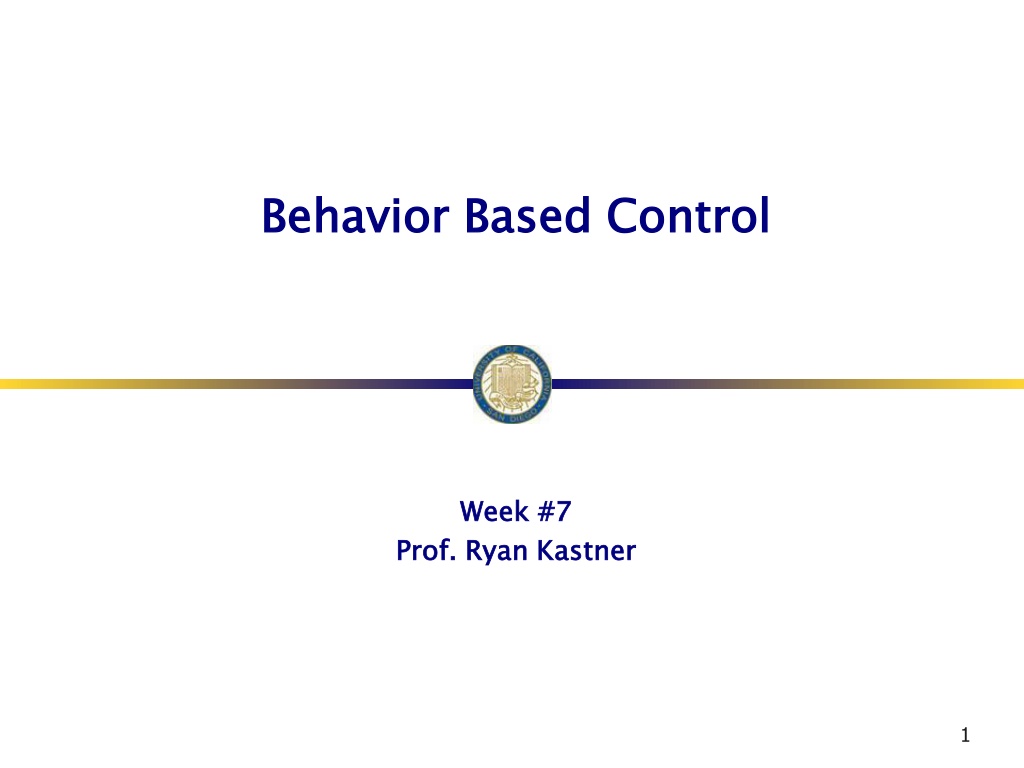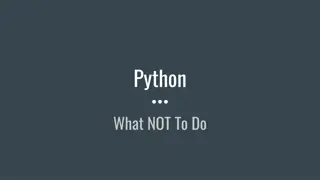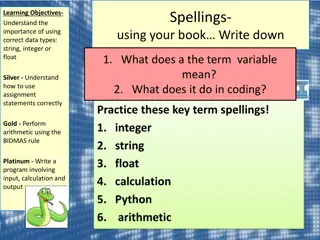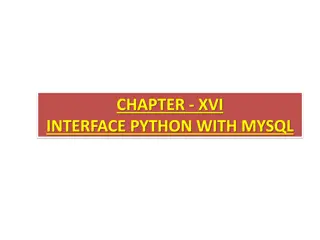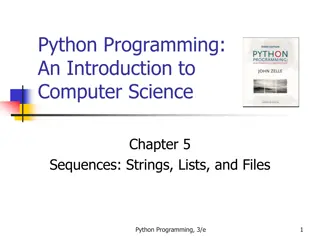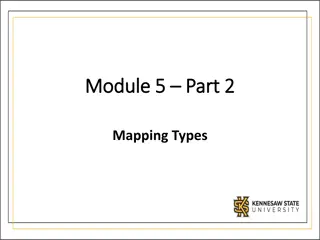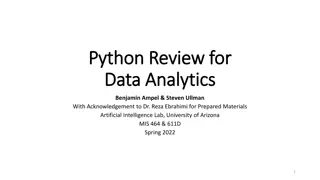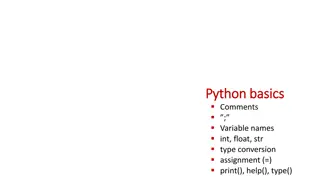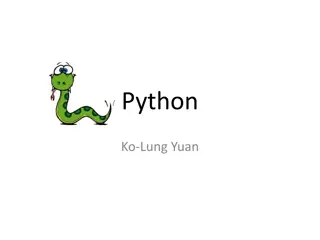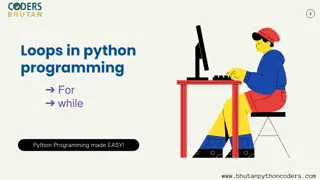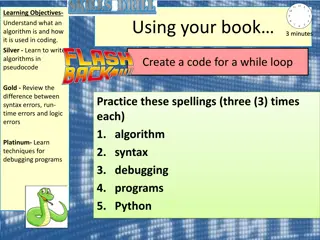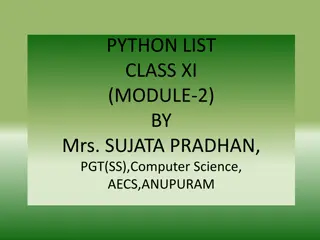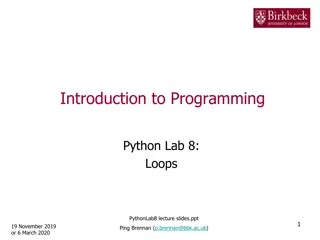Understanding Behavior-Based Control in Python Robotics Programming
Explore the world of behavior-based control in Python programming for robots, focusing on structuring robot programs, designing behaviors, arbitration schemes, and names/return values in Python. Learn how to control robots by organizing behaviors and decision-making units. Discover the importance of reactive control, sensor fusion, and prioritizing recommendations in robot programming. Dive into the fundamentals of specifying automated control and designing behavior-based control strategies with ease.
Download Presentation

Please find below an Image/Link to download the presentation.
The content on the website is provided AS IS for your information and personal use only. It may not be sold, licensed, or shared on other websites without obtaining consent from the author. Download presentation by click this link. If you encounter any issues during the download, it is possible that the publisher has removed the file from their server.
E N D
Presentation Transcript
Behavior Based Control Behavior Based Control Week #7 Week #7 Prof. Ryan Kastner Prof. Ryan Kastner 1
Oh Behave! Oh Behave! A program is all about exercising control Python programs control the computer which communicates with the Myro When writing robot control programs, the structure you use to organize the program itself is a control strategy Programming a robot is specifying automated control Sensing and control together form Reactive Control 2 2
Structuring Robot Programs Structuring Robot Programs Structuring robot programs makes designing behaviors easy Sensor Fusion: Just another buzz name for Reactive Control or Direct Control In behavior-based control you get away from sensors and focus the design of your robot programs based on the number and kinds of behaviors your robot has to carry out 3 3
Behavior in a Maze Behavior in a Maze The robot in a Maze has three behaviors: Cruise (If there is no obstacle) Avoid Obstacles (If present) Seek Light (If present) Define each behavior as an individual decision unit 4 4
Design Each Behavior Design Each Behavior cruiseSpeed = 0.8 turnSpeed = 0.8 lightThresh = 80 def seekLight(): L, C, R = getLight() if L < lightThresh: return [True, cruiseSpeed/2.0, turnSpeed] elif R < lightThresh: return [True, cruiseSpeed/2.0, -turnSpeed] else: return [False, 0, 0] def cruise(): # is always ON, just move forward return [True, cruiseSpeed, 0] def avoid(): # see if there are any obstacles L, R = getIR() L = 1 - L R = 1 - R if L: return [True, 0, -turnSpeed] elif R: return [True, 0, turnSpeed] else: return [False, 0, 0] 5 5
Arbitration Schemes Arbitration Schemes To control the Robot, one has to decide which recommendation to chose Priority Assignment: Also called subsumption architecture Higher the module in the figure, higher the priority By arranging control: Design of each behavior is easy Testing becomes easy More behaviors can be added 6 6
Names and Return Values Names and Return Values In Python a name can represent anything as its value: a number, a picture, a function, etc. E.g. : behaviors = [seekLight, avoid, cruise] List named behaviors is a list of function names each of which denote the actual function as its value for behavior in behaviors: output, T, R = behavior() In each iteration of the loop, the variable behavior takes on successive values from this list: seekLight, avoid, and cruise 7 7
Design Main and Arbitrate Design Main and Arbitrate # list of behaviors, ordered by priority (left is highest) behaviors = [seekLight, avoid, cruise] def main(): while True: T, R = arbitrate() move(T, R) main() # Decide which behavior, in order of priority # has a recommendation for the robot def arbitrate(): for behavior in behaviors: output, T, R = behavior() if output: return [T, R] 8 8
Math in Python Math in Python Python provides a set of libraries so you don t have to write them math library: from math import * ceil(x)Returns the ceiling of x as a float, the smallest integer value greater than or equal to x floor(x) Returns the floor of x as a float, the largest integer value less than or equal to x exp(x) Returns ex 9 9
Functions in Math Functions in Math log(x[, base]) Returns the logarithm of x to the given base. If the base is not specified, return the natural logarithm of x (i.e., log e x) log10(x) Returns the base-10 logarithm of x (i.e. log 10 x ) pow(x, y) Returns xy sqrt(x) Returns the square root of x ( x) import math >>> math.ceil(5.34) 6.0 10 10
Summary Summary Behavior based Control Mathematical Functions 11 11
